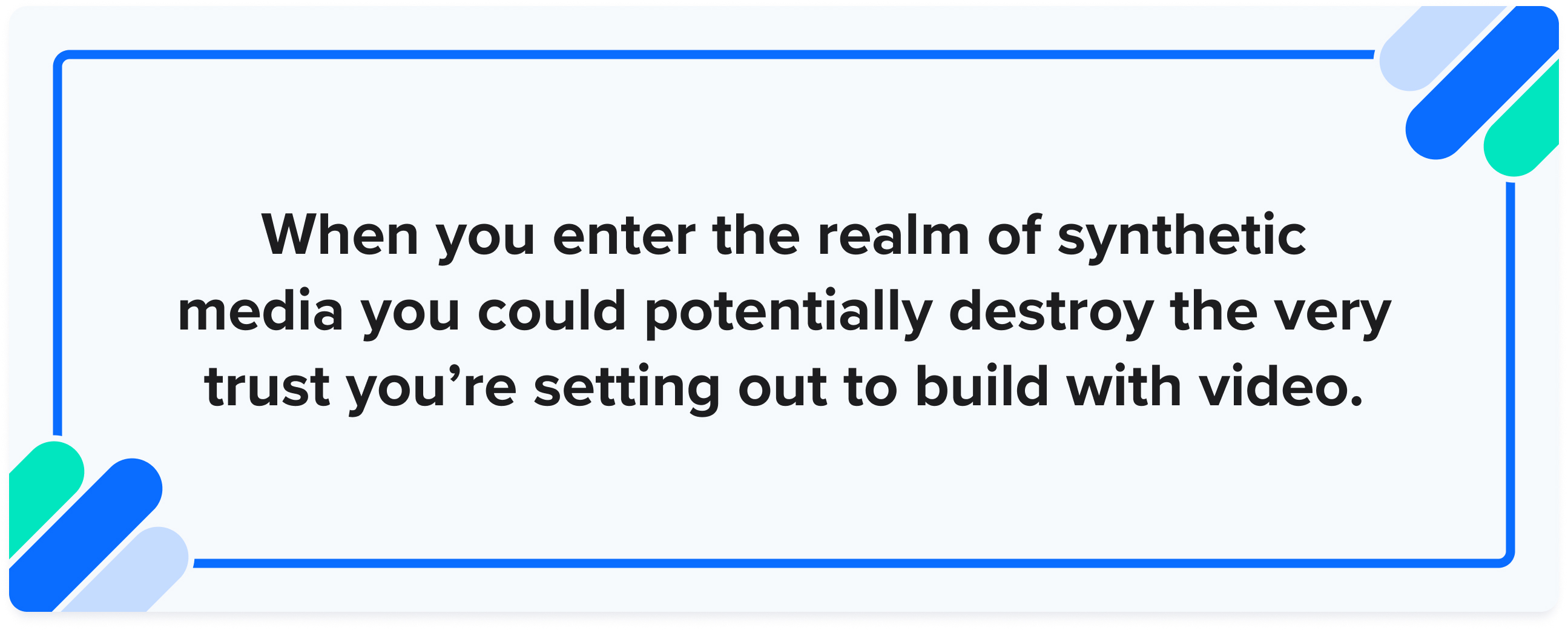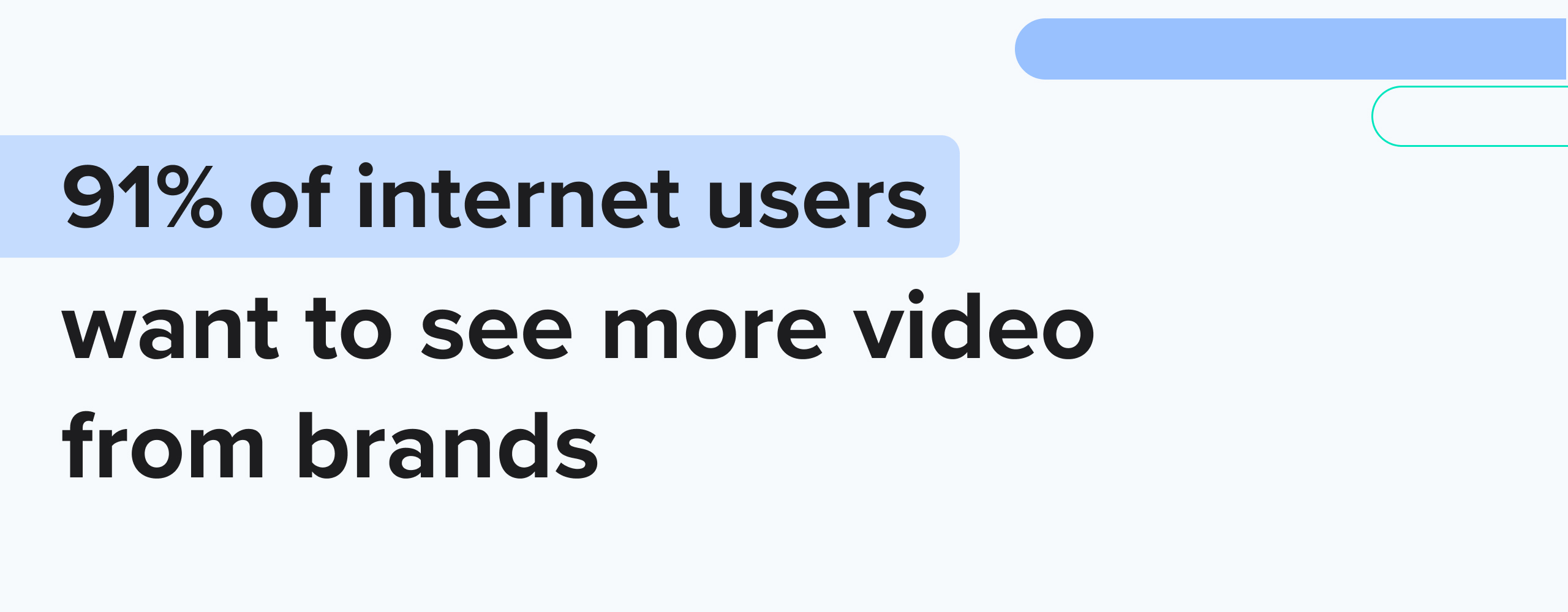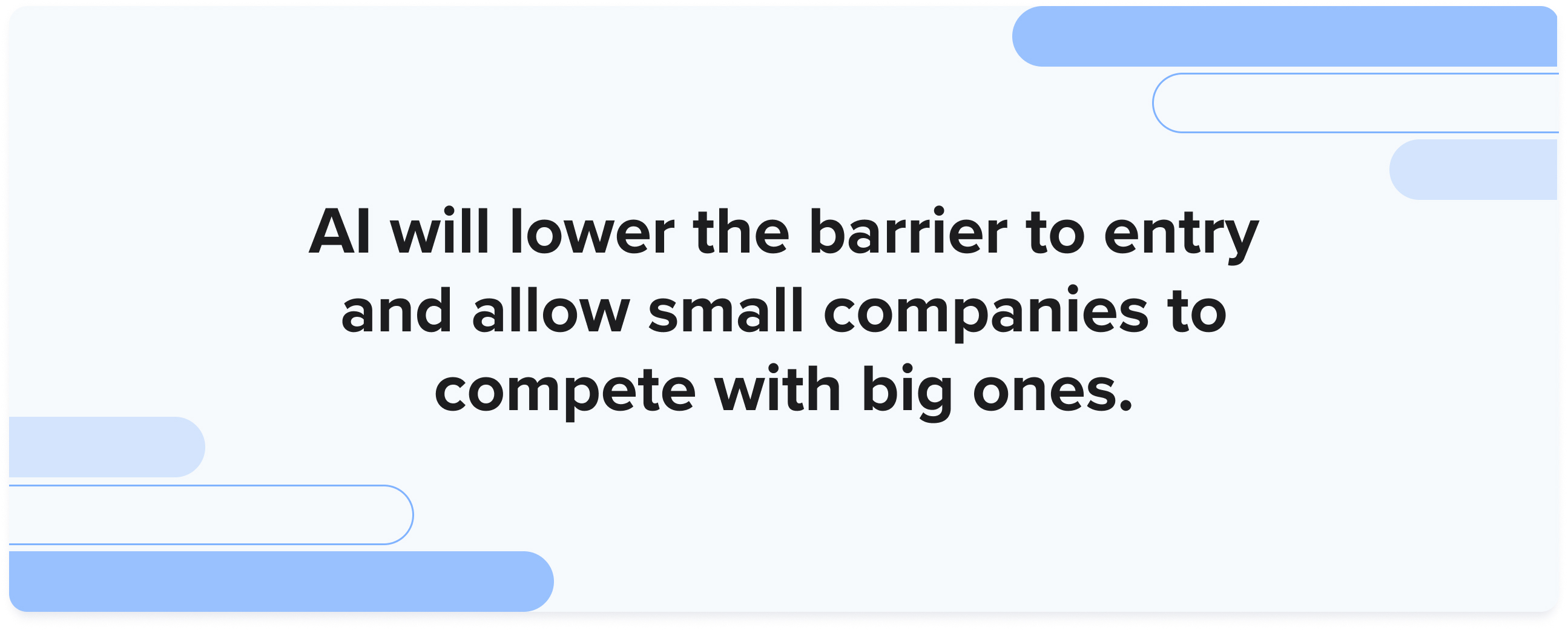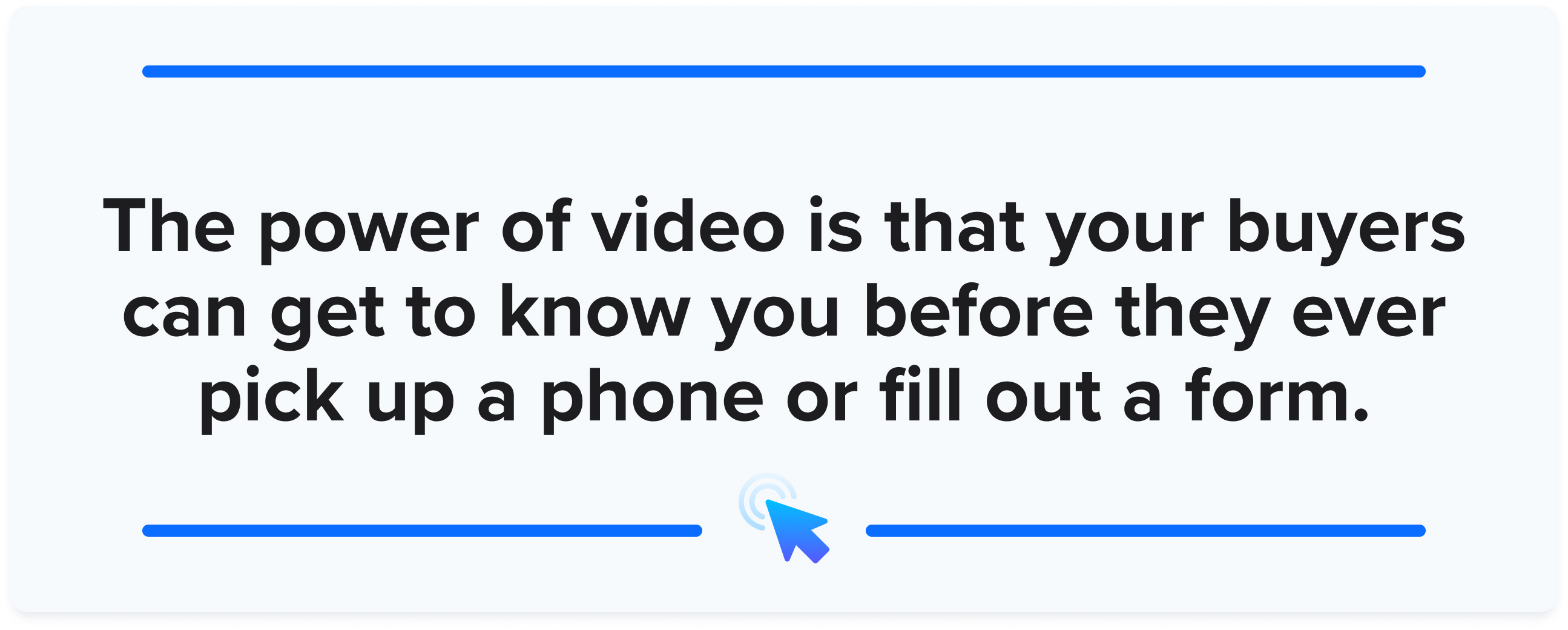You know your company should be doing more video. You’ve known it for years. But now, as many of the old roadblocks get removed, you’ve got fewer excuses than ever before.
With each passing year, video gets quicker to film, easier to share, and cheaper to produce.
AI tools for video promise to take away even more barriers to entry, but you can go too far. A tool may offer efficiency — but that same tool could end up doing more harm to your brand than good.
When you enter the realm of synthetic media — that is, deceptive or overly manipulated video, you could potentially destroy the very trust you’re setting out to build with video.

Marcus Sheridan, author of They Ask, You Answer and The Visual Sale believes AI will level the playfield by allowing scrappy companies to outpace the big boys. At the same time, he sees the danger of taking AI shortcuts that undermine the integrity of your brand.
In all things, he says, you need to keep your core principles in mind: Your content exists to help your buyers. AI can multiply those efforts and get content out the door quicker — but you should avoid tools that will diminish your trustworthiness in the marketplace.
The purpose of your brand’s video content
Demand for video is at an all-time high. And it’s not coming back down. YouTube is the second most popular website in the world (behind only its parent company Google), with more than 2.7 billion active users in 2023. And, according to Wyzowl, 91% of internet users want to see more video from brands.
If your business is late to the party producing video content, you’re missing out on a way to connect with a huge audience.

But video isn’t just a box you can check. You need to be making videos for the right reasons. According to Marcus, video is so powerful because it allows your potential customers to get to know you and your brand before they ever reach out to your sales team.
When you make videos that answer buyers’ questions, you build trust with your audience and create a brand people want to follow.
With or without AI, this should be the principle behind any video content you create.
Deepfakes, digital avatars, and authentic content
Today, with voice cloning technology, you can make someone say something they never said. Add in deepfake technology and you can make a convincing visual to go along with it.
Should audio cloning and deepfakes be a part of your marketing?
For Marcus, the line of delineation is intent. If your goal is to be helpful, you’re likely on the right track. If you’re seeking to be deceptive, you’re not. A video created with malicious purposes (or without the expressed consent of the person in the video) has no place in the marketing of your company.

But these technologies themselves are not the problem. They are tools — and could be used for good or ill, depending on who wields them.
Say you film a video of a colleague and a few lines get flubbed. With that person’s permission, there’s no problem using voice cloning to fill them in.
Other applications will depend on your brand, your team, and the technology.
If you need to make a video of a team member, but that person lives across the country, should you deepfake it? What about filling in one missing shot with a deepfake?
For Marcus, as long as you’re not being purposefully deceitful or misleading, you can (and should) use the technology to make better content.
Digital avatars
With a few clicks, you can create a digital avatar to be the spokesperson for your brand: That is, a fictional digital “person” that can look and sound the way you want. This “person” could host your videos, walk a new hire through onboarding, or facilitate internal training. Look at this example from Sythesia.
It’s fast. You can import a document, pick a persona, and have a video done in a matter of minutes.
Marcus is okay with this, provided it’s made clear to the audience. However, he advises companies that the power of video is that your buyers can see you, hear you, and get to know you before they ever pick up a phone or fill out a form.
If you’ve created the right video content, the building blocks of trust should be present before someone enters into a sales conversation.
Your actual people might not be as polished as a computer-generated avatar, but they are the real people your buyers will be working with, and, according to Marcus, you should show them whenever possible.

But, imagine an avatar of Marcus himself that’s trained on his books and speeches. It could answer questions from clients the exact way Marcus would — but at scale.
Marcus has no problem with such technology, provided he knows about it and has signed off. But he admits this brings up interesting questions. For one, what would happen if the real employee were to leave the company? Do contracts today have any clauses about digital likeness?
When people question everything — Don’t be afraid to show your process
In a landscape where authenticity is on everyone’s mind, Marcus advises companies to let people peek behind the scenes.
For years, videographers operated with the exact opposite approach to what your math teachers used to demand. In algebra, you were always supposed to show your work. For videographers, what was left on the cutting room floor was never to see daylight.
Until now.
According to Marcus, a way to bring authenticity to your content is to offer viewers a glimpse into your process.
Show what goes on in pre-production, show your outtakes. In doing so, you’ll show your personality and prove your authenticity.
AI video tools level the playing field
Marcus believes that AI will do what the internet did a generation before: lower the barrier to entry and allow small companies to compete with big ones.
Suddenly, you don’t need a full video production team to turn out great content. You can be more agile, more creative, and more efficient than the big boys who, despite all their resources, can’t get out of their own way.
But those new abilities come with a warning. Don’t get yourself onto a slippery slope where you’re sacrificing the authenticity of your brand in the name of speed.
Use the tools, but be sure to keep humans in the process and stay true to your principles.
Author: jbecker@impactbnd.com (John Becker)
* This article was originally published here
No comments:
Post a Comment